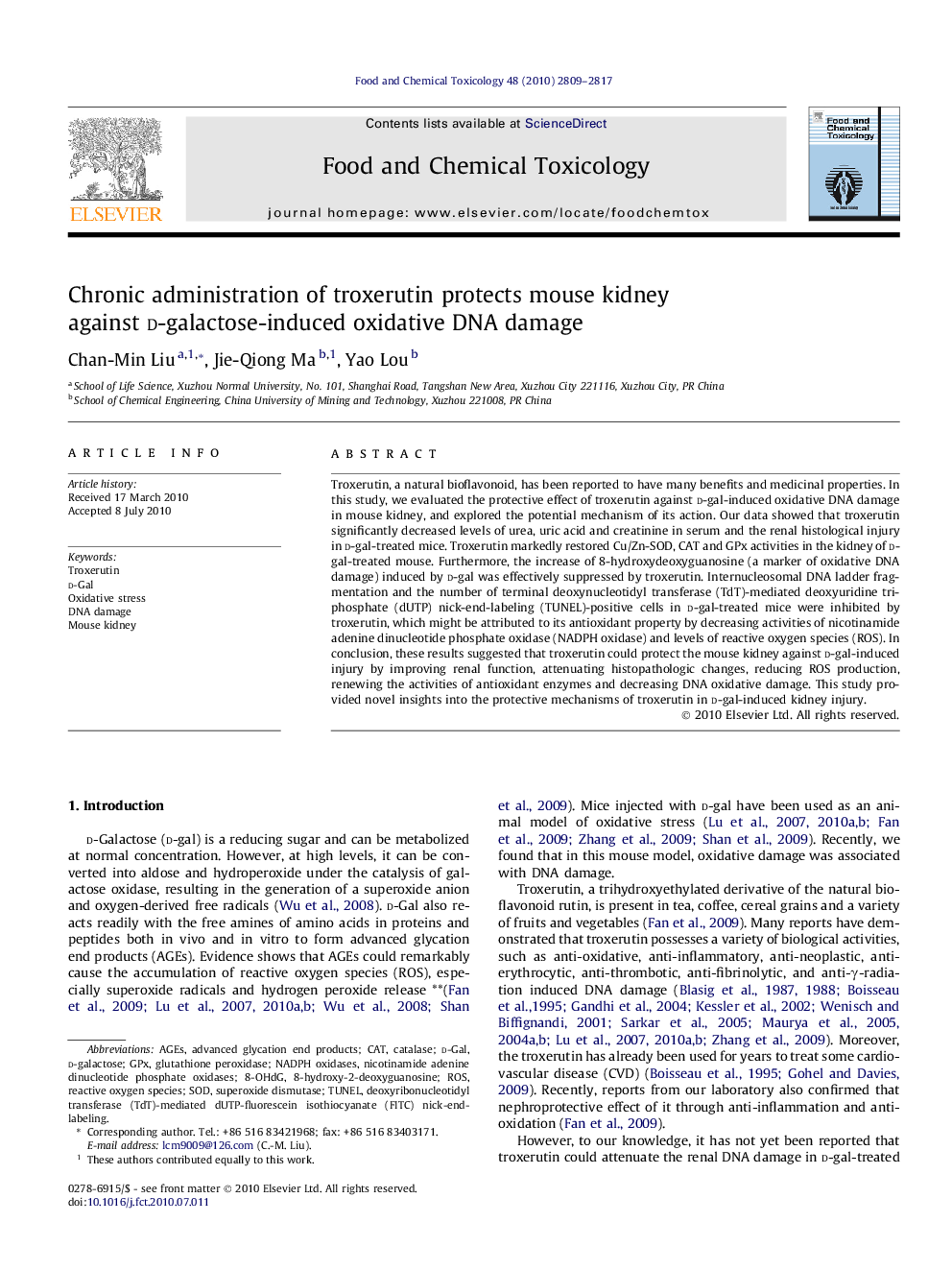| Article ID | Journal | Published Year | Pages | File Type |
|---|---|---|---|---|
| 2585594 | Food and Chemical Toxicology | 2010 | 9 Pages |
Troxerutin, a natural bioflavonoid, has been reported to have many benefits and medicinal properties. In this study, we evaluated the protective effect of troxerutin against d-gal-induced oxidative DNA damage in mouse kidney, and explored the potential mechanism of its action. Our data showed that troxerutin significantly decreased levels of urea, uric acid and creatinine in serum and the renal histological injury in d-gal-treated mice. Troxerutin markedly restored Cu/Zn-SOD, CAT and GPx activities in the kidney of d-gal-treated mouse. Furthermore, the increase of 8-hydroxydeoxyguanosine (a marker of oxidative DNA damage) induced by d-gal was effectively suppressed by troxerutin. Internucleosomal DNA ladder fragmentation and the number of terminal deoxynucleotidyl transferase (TdT)-mediated deoxyuridine triphosphate (dUTP) nick-end-labeling (TUNEL)-positive cells in d-gal-treated mice were inhibited by troxerutin, which might be attributed to its antioxidant property by decreasing activities of nicotinamide adenine dinucleotide phosphate oxidase (NADPH oxidase) and levels of reactive oxygen species (ROS). In conclusion, these results suggested that troxerutin could protect the mouse kidney against d-gal-induced injury by improving renal function, attenuating histopathologic changes, reducing ROS production, renewing the activities of antioxidant enzymes and decreasing DNA oxidative damage. This study provided novel insights into the protective mechanisms of troxerutin in d-gal-induced kidney injury.
